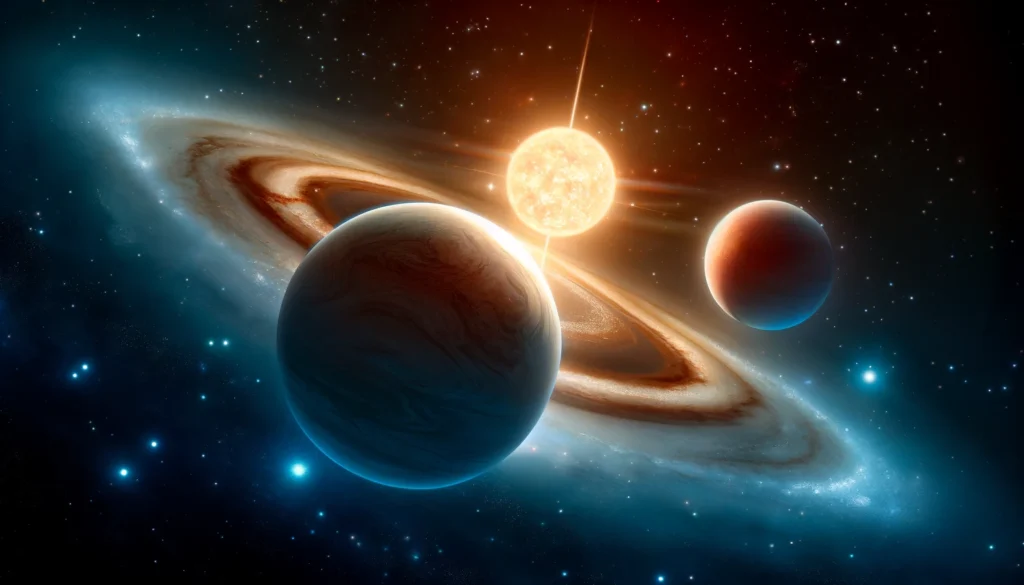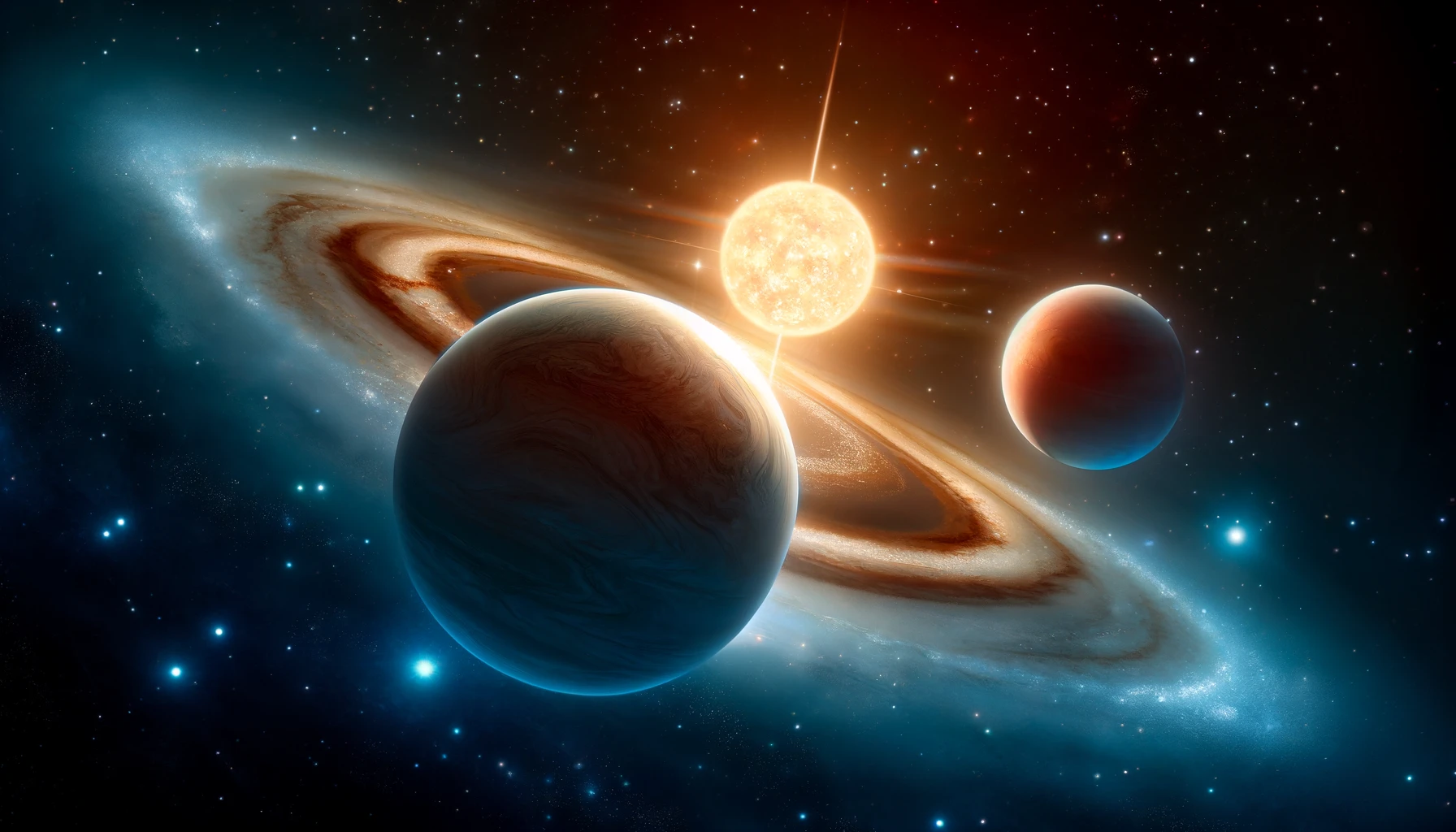“Kepler-47, exoplanet discovery, binary star systems, Kepler Space Telescope, circumbinary planets, planetary stability, habitability potential, space research, astronomy updates, Kepler-47 system”
“Explore the recent groundbreaking discovery of Kepler-47d, the third planet in the Kepler-47 system, known for its unique orbit around two stars. This detailed analysis covers the characteristics of Kepler-47d, its potential for hosting habitable moons, and the implications for planetary formation in binary star systems. Dive into how this discovery enhances our understanding of the cosmos.”

The Kepler-47 system, already famous for housing the first circumbinary planets—planets that orbit around two stars—has just become more intriguing with the confirmation of a third planet, aptly named Kepler-47d. This discovery adds a new chapter to our understanding of the dynamics and diversity of planetary systems beyond our own solar system.
Located in the constellation Cygnus, approximately 3340 light-years from Earth, the Kepler-47 system is a mesmerizing dance of celestial mechanics. The central stars, a pair consisting of a Sun-like star and a smaller companion, a red dwarf, have previously been known to host two planets, Kepler-47b and Kepler-47c. The addition of Kepler-47d not only expands the system’s family but also provides crucial insights into the formation and stability of planets in binary star systems.
Discovery Through Transit Method
The discovery of Kepler-47d was made using data from the Kepler Space Telescope, which detects planets by observing the slight dimming of a star as a planet transits, or passes in front of it. This method has revolutionized our ability to detect exoplanets, particularly those in tight orbits around their stars.
Kepler-47d’s transit was initially obscured by the complex light variations caused by the two central stars and the other known planets in the system. Advanced algorithms and extended data analysis allowed astronomers to isolate the signals attributable to the new planet. This third planet is located further from the central stars than its siblings, with a wider orbit that suggests a colder, more distant world compared to Kepler-47b and c.
Characteristics of Kepler-47d
Kepler-47d is unique in its size and orbit. It is larger than either of its planetary neighbors, with a radius approximately seven times that of Earth, making it a gas giant like Jupiter or Saturn in our own solar system. The planet completes an orbit around its binary stars approximately every 187 Earth days, positioning it in a region that could, intriguingly, be conducive to habitability if it were not a gas giant.
The discovery of Kepler-47d has implications for our understanding of how planets can remain stable in the gravitational pull of two stars. Binary systems can be hostile environments for planets, with the gravitational forces potentially disrupting orbits or leading to ejection from the system. The stable, wide orbit of Kepler-47d provides a valuable data point that such systems can support long-term planetary stability.
Implications for Habitability
While Kepler-47d itself is not a candidate for life as we know it—being a gas giant—it raises interesting questions about the habitability of moons that could orbit such a planet. In our solar system, moons like Europa and Enceladus, which orbit gas giants, are considered top candidates for the search for life, thanks to their subsurface oceans.
If Kepler-47d hosts moons, they could potentially have conditions suitable for life, especially if these moons have atmospheres and oceans. The complex dynamics of a circumbinary orbit add layers to how these moons could maintain temperatures conducive to liquid water, a key ingredient for life.
Future Research and Missions
The discovery of Kepler-47d has set the stage for future observations. Space telescopes equipped with more sensitive instruments, such as the James Webb Space Telescope (JWST) and the upcoming PLATO mission by the European Space Agency, are expected to provide more detailed data on the Kepler-47 system. These missions could ascertain the atmospheric composition of Kepler-47d and search for moons that might orbit the planet.
Moreover, understanding the formation of planets in binary systems is crucial for the broader field of exoplanet research. The Kepler-47 system acts as a natural laboratory for testing theories of planetary formation and stability. Future theoretical work will need to explain how such a system can form and remain stable over billions of years, potentially leading to revised models of planetary system development across the galaxy.
Conclusion
The addition of Kepler-47d to the family of planets in the Kepler-47 system highlights the diversity and complexity of planetary systems in our universe. Each new discovery like this pushes the boundaries of our knowledge and brings us closer to understanding the myriad ways in which planets can form and evolve around different types of stars. As we continue to probe the depths of space, systems like Kepler-47 serve as a reminder of the astonishing variety and resilience of nature’s creations in the cosmos.
Read More-
- NASA Webb Telescope Hints at Possible Atmosphere Surrounding Rocky Exoplanet
- New NASA Black Hole Visualization Takes Viewers Beyond the Brink
- NASA Artemis Generation: Cultivating the Moon Trees Across America
- Curious Asteroid Selam, Spotted by NASA Lucy Spacecraft, Is a Cosmic Toddler










